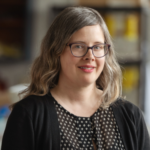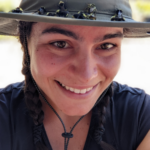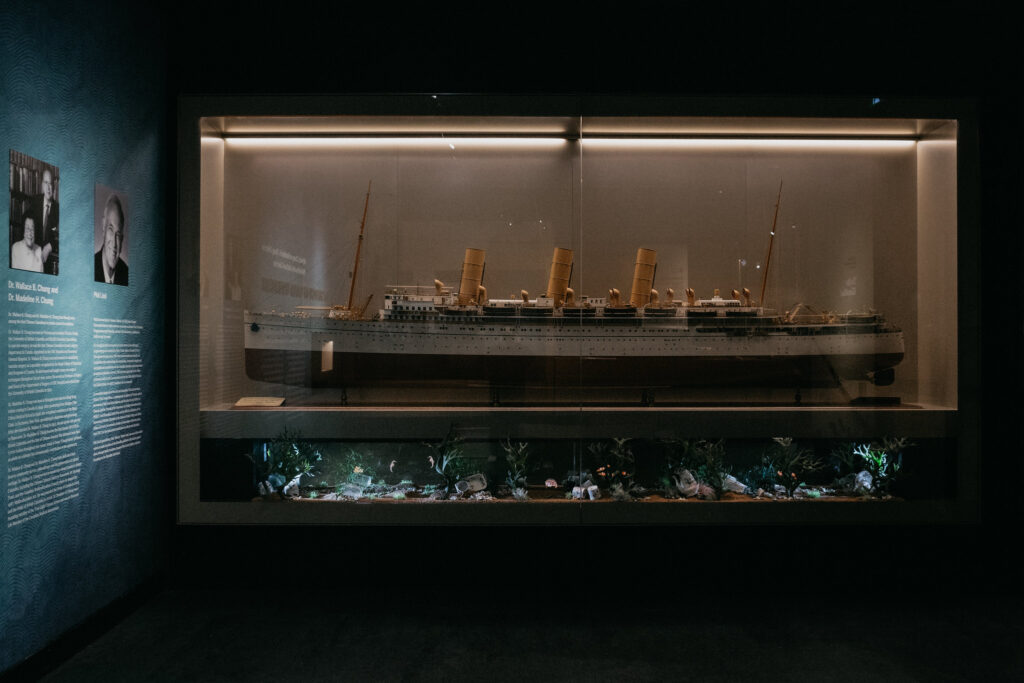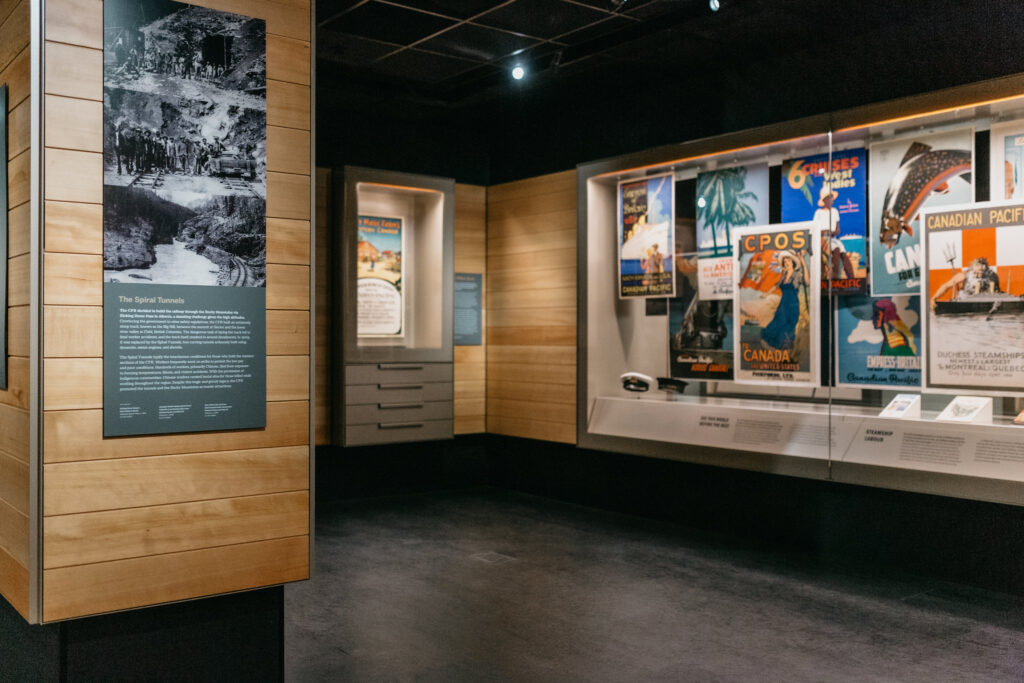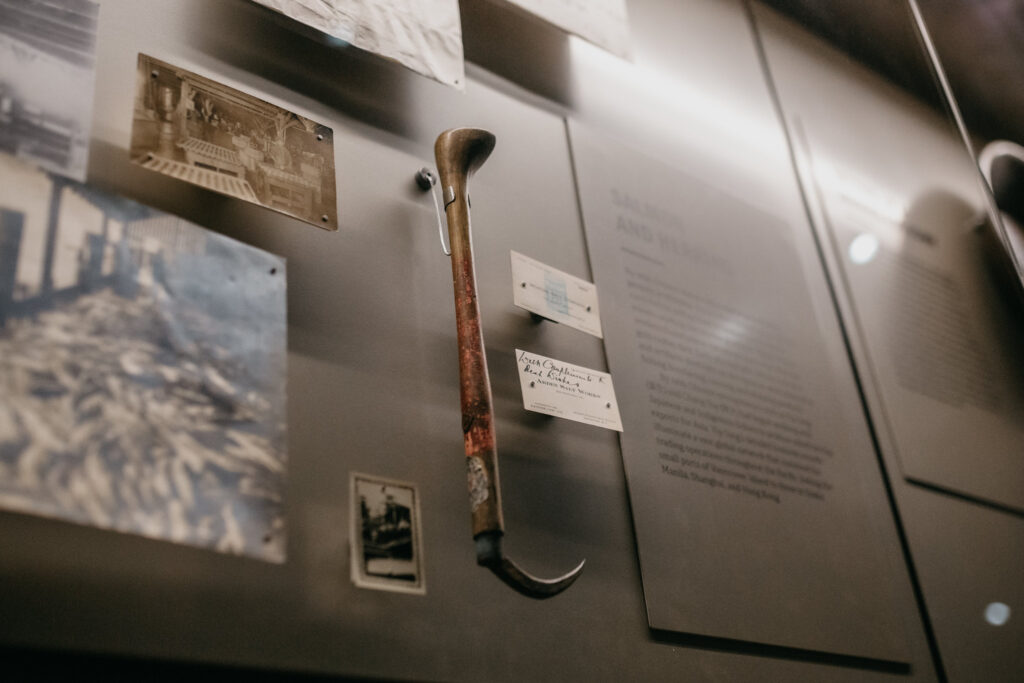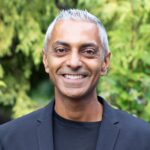UBC People
Statscan’s cuts have forced us to see Canada through a U.S. lens
Statscan’s cuts have forced us to see Canada through a U.S. lens
Statistics Canada needs to restart its reporting of national marriage and divorce rates, argues UBC economist Marina Adshade.
THE DANGER OF PARALYMPIC BOOSTING
Update: Krassioukov and five UBC students will study the dangerous practice of Paralympic “boosting” at the 2012 London Games while running a health clinic for athletes.
by Hilary Thomson, March 4, 2010
After years of hard work, Dr. Andrei Krassioukov has finally earned admission to the Athletes Village at the 2010 Vancouver Paralympic Games.
But Krassioukov isn’t a competitor — he’s an internationally recognized expert in spinal cord injury and leader of the only research team to be granted access to the Vancouver Athletes Village during the Games.
Krassioukov and research team members will investigate the controversial practice of “boosting.” Practiced by some individuals with spinal cord injury, boosting involves intentionally raising blood pressure to stimulate the body’s energy and endurance. Non-athletes with SCI may use boosting to feel more energetic and alert.
Paralympic athletes use boosting to win — it can improve performance by up to 15 per cent. Stressing techniques to stimulate parts of the body below the level of the spinal cord injury, and to produce a spike in blood pressure, can range from wearing pressure stockings, to compressing the testicles by sitting on a handful of ball bearings, or blocking a urinary catheter to distend the bladder.
Injury to the spinal cord disrupts control of heart and blood vessels that are normally regulated by the autonomic nervous system, part of the nervous system that provides non-voluntary control to various organs. This disruption — which varies in severity between individuals — means the body cannot properly replenish energy consumed through exercise leading to a drop in peripheral blood flow, sweating, shortness of breath and faintness . This creates significant disadvantages during competition, leading some athletes to use boosting as a drastic measure to correct functions lost through injury.
Besides creating an unfair competitive advantage, boosting is a dangerous practice. The sudden surge in blood pressure typically seen during boosting is known as autonomic dysreflexia and can lead to stroke, heart attack or death. But the International Paralympics Committee (IPC) 1994 ban on boosting has been difficult to enforce.
A physician-scientist at Vancouver Coastal Health’s GF Strong Rehabilitation Centre, Krassioukov has studied autonomic functioning in SCI patients for more than 30 years and has collected data from paralympic athletes headed for competition since 2006. During the last five years he has urged the IPC to go beyond the ban to address how differences in autonomic function affect elite athlete performance.
Krassioukov believes that adding autonomic functioning to the athlete classification system that currently measures only motor and sensory functioning will more evenly match competitors and reduce motivation to boost.
“Being allowed to conduct research in the Athletes’ Village is an exciting milestone for me,” says Krassioukov, an associate professor in UBC’s Dept. of Medicine and co-director of the International Collaboration on Repair Discoveries (ICORD), part of Vancouver Coastal Health Research Institute (VCHRI). “It suggests the IPC will consider how differences in autonomic function create inequities in performance and fuel the risky practice of boosting.”
Autonomic functioning varies between individuals according to the level and severity of their SCI. Currently, athletes with higher-level injury and significant autonomic function impairment compete directly with individuals with lesser impairment. Athletes have used boosting to close the gap.
During the 2010 Paralympic Winter Games, expected to draw 650 athletes from more than 40 countries, he plans to test 50 curling and sledge hockey athletes with spinal cord injury in a Cardiovascular Health Education Clinic in the Village and at ICORD. Volunteers will participate in a 90-minute assessment of autonomic functioning, complete a questionnaire and receive educational brochures about autonomic dysreflexia and risks of boosting.
Krassioukov expects it will be at least four years before his team will provide the IPC with possible guidelines on testing of autonomic functioning in paralympic athletes. Additional data from other paralympic sports must be collected and analyzed and recommendations developed and tested. He hopes research advances will ultimately eliminate the need for boosting but accepts that individuals with SCI are always looking for ways to improve their functioning.
“I am amazed by my patients’ incredible tenacity to achieve what they want to do in life — how they not only survive but fully engage in their adventure with a new body.”
Krassioukov’s work is supported by the Heart and Stroke Foundation of Canada; the Disability Health Research Network; the Craig H. Neilsen Foundation; and the Rick Hansen Foundation.
Tap and rope guide blind swimmer to victory
UPDATE:
Aug. 14, 2012 – Donovan Tildesley will compete in his fourth Paralympic Games in London (Aug. 29-Sept. 9).
Sep. 11, 2008 – Donovan Tildesley won bronze in 400-metre S11 swimming in Beijing.
Sep. 4, 2008 – Donovan Tildesley has been named Canada’s flag bearer for the Beijing Paralympics. Tildesley will lead Team Canada’s 143 athletes into the Opening Ceremony.
By Brian Lin, July 3, 2008
At age 24, new UBC grad Donovan Tildesley has broken two world records, won a dozen gold medals in international swim meets and is part of Team Canada for the third time in the Paralympic Games in Beijing this summer.
The Vancouver native is also a motivational speaker and part owner of a small radio station in Whistler, B.C.
Tildesley, who was born blind, won a bronze medal in the 2000 Sydney Paralympics and two silver and one more bronze medal in Athens in 2004. He’s currently the No. 2-ranked swimmer with a disability in the world in the 400-metre freestyle.
“Competing in the Paralympics was one of the most amazing experiences in my life,” says Tildesley, who began racing at age nine with the help of his father and coach Hugh, a former competitive swimmer.
Hugh is also Donovan’s “tapper,” charged with the vital task of tapping his son on the head with a pole when he’s one stroke away from the wall.
“The questions I get asked most is how do I avoid swimming into the wall, and how I swim in a straight line,” explains Tildesley.
Using the lane rope as a guide, Tildesley must keep his arms straight and centred as to keep on course. “As I get tired, keeping my arms symmetrical becomes more difficult, but that’s part of the sport.”
Since graduating from UBC this spring with an English degree, Tildesley has been busy speaking at schools and community events on behalf of the RBC Olympians Program. “I love it as much as competing in the pool,” says Tildesley. “It’s a chance to step outside myself and tell my story. “If I can enrich, inspire or help change someone’s life, that makes me happy.”
Another thing that makes Tildesley happy involves skis and may not be everybody’s cup of tea. “There’s nothing more thrilling than being on top of Spanky’s Ladder on Blackcomb and making the 500 vertical feet drop.”
Now imagine doing that with your eyes closed.
Recap: Looking back at UBC and the 2012 Olympics
By CJ Pentland and Henry Lebard, The Ubyssey
Bronze medals, swim-offs, meeting royalty: the 2012 Summer Olympics featured much excitement for past and current UBC students.
Unsurprisingly, the swimmers had the most success in London. Led by Brent Hayden’s bronze medal in the 100m freestyle, several other T-Birds put forth strong efforts.
Alumnus Scott Dickens started the competition strong as he became the first Canadian to swim the 100m breaststroke in less than a minute, coming in at 59.85s. He made the semi-final in that event, along with the semi-final of the 200m breaststroke and the final of the 4x100m medley relay team, which also featured Hayden.
The reigning CIS male swimmer of the year, Tommy Gossland, swam in the 4x100m freestyle relay heats along with Hayden, but their time didn’t qualify them for the final.
As for the women, Martha McCabe led the way by finishing fifth overall in the 200m breaststroke after positing a time of 2:23.16 in the final. Tera van Beilen recorded a time of 1:07.48 in the 100m breaststroke semi-finals, which put her in a tie for eighth and forced a swim-off. However, she lost the two-person race and failed to make the finals.
CIS female swimmer of the year Savannah King raced in both the 400m and 800m freestyles, recording a personal best in the 800m. Heather MacLean swam in both the 4x100m and 4x200m freestyle relays, with her 4x200m team finishing fourth overall.
Back on land, a few former Thunderbirds put up good results in track and field events. Inaki Gomez finished 13th in the 20km race walk with a time of 1:20:58, setting a personal best and breaking the Canadian record time in that event.
Liz Gleadle finished 12th overall in women’s javelin, the highest-ever finish by a Canadian in that event. Curtis Moss competed in men’s javelin, but finished 22nd in qualifying and failed to make the finals.
To round out the field events, high jumper Mike Mason came eighth in men’s high jump with a best jump of 2.29m.
There were also a few alumni competing on the outdoor water. In her third Olympics, Nikola Girke finished tenth in women’s RS:X Sailing. Mike Leigh and Luke Ramsay competed in the men’s sailing 470 class, ending up in the 25th spot. And Ricardo Montemayor, who was competing for Mexico, raced in the men’s sailing Laser Class and finished 38th.
In cycling, UBC had one representative. Denise Ramsden raced in both the women’s road race and time trials, finishing 27th and 19th, respectively.
As for the indoor events, badminton player Toby Ng met the Prince of Wales before the Games started, but he and his mixed doubles partner dropped all three of their matches in the group play stage.
The Olympics are now over, but there is still one more UBC athlete left to compete. Paralympic swimmer Donavan Tildesley will be swimming in four events in London once the Paralympic Games kick off on August 29.
This article was originally published by UBC’s student newspaper, the Ubyssey, on Aug. 12.
Meet UBC’s 19 Olympians and Paralympians here.
Hot topics in the news
UBC experts on pipeline debates
- Environmental issues
- Business and trade
- Aboriginal communities
- Law and policy
UBC welcomes Paralympics torch
On March 11, 2010 UBC will become one of only 13 community stops on the Paralympic Torch Relay. Just one day before the 2010 Paralympic Games begin in Vancouver, the Paralympic Torch will zig zag through UBC Point Grey campus, kick-starting the Paralympic experience.
Read more: http://www.webcommunications.ubc.ca/ubc2010/whats-on/paralympic-torch-relay/
Introduced bumble bee dominates Lower Mainland pollinator surveys
Scientists at UBC are raising concern about the number of common eastern bumble bees—an introduced species—that they are finding in the wild and in research surveys of pollinators in the Lower Mainland.
We spoke to associate professor Dr. Risa Sargent, who heads the Plant Pollinator and Global Change lab in the faculty of land and food systems, and lab member and master’s student Sarah Knoerr about what they are seeing and why they are alarmed.
Can you describe the common eastern bumblebee?
Sargent: Bombus impatiens is native to the eastern-most provinces of Canada and along the eastern seaboard into northern Florida. It was introduced to B.C. in the late ’90s as a greenhouse pollinator, mostly for tomatoes, peppers and cucumbers.
They’re mainly reared in Europe and Ontario and imported to B.C. to be housed inside greenhouses. Growers are meant to destroy the colonies at the end of their life cycle for hygiene and biosecurity reasons, so we shouldn’t see them in the wild.
What are you seeing in the Lower Mainland?
Knoerr: Between March and August last year, we surveyed pollinators in agricultural areas in Delta and Richmond and Bombus impatiens was by far the most common bee that I found. The number was more than double the next most common native species and overall made up about 40 per cent of the bees that I caught. We are also seeing them in our lab’s surveys all over metro Vancouver, very far from greenhouses, and we have caught queens out in the spring—a sign that they’re breeding in the wild.
Sargent: This tells us that they have been regularly escaping captivity, and that could be due to colonies not being destroyed each season according to guidelines. They now have reproducing populations that are sustaining themselves outside of any management here in the Lower Mainland.
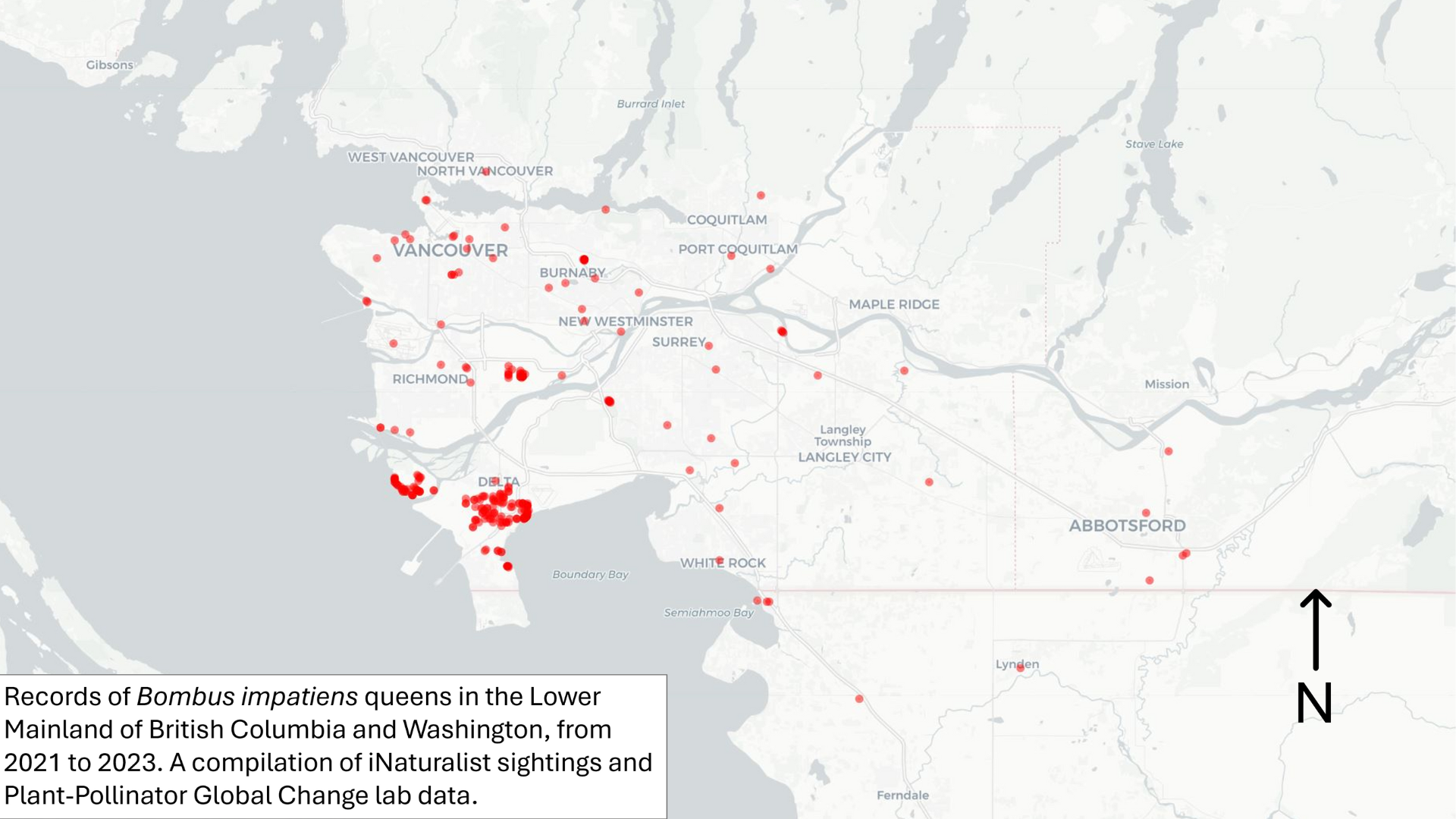
Map showing records of Bombus impatiens queens in the Lower Mainland of British Columbia and Washington, from 2021 to 2023. Data compiled from iNaturalist sightings and Plant-Pollinator Global Change lab data. Credit: Sarah Knoerr/UBC
Why is this concerning?
Sargent: Bombus impatiens is a close relative of several native bees found in B.C., which could indicate stronger competition for resources than if they were distant relatives.
While we don’t have direct evidence of their impacts yet, we suspect they could compete with local bees for nesting sites and flowering resources. Bees require pollen and nectar from local flowers to rear their young, and they depend on those floral resources for their reproduction. The more bees you have with overlapping floral resource use, the higher the chance for competition. We’re worried that the growing numbers of Bombus impatiens could reduce the population persistence and health of our native bees.
A different species of Bombus was similarly introduced in Japan and Chile for greenhouse pollination and there is good evidence that some species of wild native bumble bees have declined and gone extinct in those countries, probably due to competition with the introduced bumble bees.
Native bees are one of the most important pollinators of both wild and agricultural plants. In B.C., blueberries, raspberries and strawberries are important agricultural industries that benefit quite a bit from wild bumble bee pollination. It’s possible that a big interruption to the bumble bee community could have knockdown effects on pollination of many important crops. We already know that the 400-odd species of wild bees in B.C. are under pressure from climate change, species introductions and destruction of their natural habitats, so this adds yet another potential for negative pressure on biodiversity.
What could be done to prevent this?
Sargent: It would be great to have legislation in place that requires imported colonies to have something called a ‘queen excluder’ which prevents queens from escaping at the end of their reproductive cycle. It seems like they are recommended but not in use widely in B.C. Stronger incentives for destroying colonies once the first worker-cycle ends, along with more enforcement to properly decommission colonies would be good, too.
Can members of the public help monitor these bees?
Knoerr: Yes! iNaturalist is an online platform where people can upload photos of organisms they see in the wild for experts to identify. It’s helpful because it provides an exact position and can be verified by multiple experts and used for research purposes. It can be particularly helpful to identify queens far away from greenhouses.
Is there anything the public can do to support native pollinator populations?
Sargent: There’s a lot that people can do! You can replace grass lawns with native plants, especially shrubs with early spring flowering, which is important to our native bees. Avoid excessive cutting and mowing and let your gardens be a little messier in the fall and spring by leaving the remnants of perennials longer because some species use those for hibernation over winter. Avoid using pesticides and herbicides in gardens or properties and support low-pesticide food production by buying locally grown low-pesticide foods or shopping at farmer’s markets.
Images and video available here.
New Chung | Lind Gallery brings B.C. histories together at UBC Library
UBC Library is excited to announce the official opening of the Chung | Lind Gallery showcasing the Wallace B. Chung and Madeline H. Chung Collection and Phil Lind Klondike Gold Rush Collection. The new exhibition space in the Irving K. Barber Learning Centre on UBC’s Vancouver campus brings together two library collections of rare and culturally significant materials from Canada’s history.
The complementary collections explore the economic and social growth of early B.C. and the Yukon through exhibits that reveal stories about the Indigenous experience and the experience of Chinese immigrants to B.C. The gallery will provide faculty, students and the public with direct access to two significant Canadian cultural properties.
“Displayed together, these two outstanding collections will create a new focal point for historical research, teaching and learning at UBC, and in time become a magnet for scholars across Canada who wish to view these rare materials first-hand.”
— Dr. Susan E. Parker, university librarian
“We’re thankful to everyone who made the Chung | Lind Gallery a reality, after many years of planning and effort to create this remarkable space. Displayed together, these two outstanding collections will create a new focal point for historical research, teaching and learning at UBC, and in time become a magnet for scholars across Canada who wish to view these rare materials first-hand,” said university librarian Dr. Susan E. Parker.
“We are thrilled to have the opportunity to bring together these two avid and dedicated collectors—Dr. Chung and Mr. Lind—who share such a passion for history and material culture. And by putting their collections in dialogue with each other, we’ve discovered unexpected resonances. Now being displayed together publicly in the new Chung | Lind Gallery, we know the collections will continue to enrich and inform each other, providing new and exciting possibilities for learning and scholarship,” said Katherine Kalsbeek, head of rare books and special collections (RBSC).
An achievement in visual storytelling
The Chung | Lind Gallery includes approximately 292 square metres of display space on the second floor of the Irving K. Barber Learning Centre. The space has been renovated to meet Canadian Conservation Institute and department of Canadian heritage guidelines and requirements for displaying, protecting and preserving heritage collections. Public and Page Two provided design support for the space.
An achievement in visual storytelling, the Chung | Lind Gallery features both rare treasures from the collections and modern marvels. At the entrance, a large-scale model of Canadian Pacific Railway (CPR) company steamship, the Empress of Asia, restored by Dr. Chung, rides the waves over a virtual ocean designed by Dutch Igloo. Further into the gallery, a miniature log cabin comes to life with projected scenes from the Klondike era.
Funding for the gallery renovation was generously provided by Phil Lind, the UBC President’s Priority Fund, the London Drugs Foundation, donors to the library, and by the Canadian government through the department of Canadian heritage’s Canada Cultural Spaces Fund.
“Libraries play a pivotal role in preserving and sharing Canada’s history and heritage, providing invaluable access to historically significant materials. They are custodians of collective wisdom, where every book can transport us to a moment in time and every shelf offers boundless opportunities for discovery. Thanks to the newly opened Chung | Lind Gallery, now and in the future, you can learn more about important moments in our country’s history and take in rare collections being showcased. Congratulations to the University of British Columbia and everyone involved in turning this dream into reality!” said Pascale St‑Onge, minister of Canadian heritage.
About the collections
The Wallace B. Chung and Madeline H. Chung Collection, donated to UBC Library in 1999, contains more than 25,000 rare and unique documents, books, maps, posters, paintings, photographs, tableware and other artifacts that represent early B.C. history, immigration and settlement, particularly of Chinese people in North America and the CPR. Items from the Chung Collection were previously on display at RBSC. The new gallery space will bring this collection further into the public eye and provide new opportunities for community engagement.
The Chung Collection has been designated as a national treasure by the department of Canadian heritage’s Canadian Cultural Property Export Review Board (CCPERB), and has been named to the Canadian Commission for UNESCO’s Canada Memory of the World Register.
“This collection started with an interest in my neighbourhood. My family was confined to Chinatown, and I became curious about the history of the people that lived there. Many people do not know how difficult things once were for early Chinese migrants. While the world has changed, this was only possible through first understanding the past. Our future is tied to history; to move forward, we must forgive the ills of the past, but we should never forget,” said Dr. Wallace Chung.
The Phil Lind Klondike Gold Rush Collection is an unparalleled rare book and archival collection dating from the Klondike Gold Rush, donated to UBC Library in 2021 by UBC alumnus and Canadian telecommunications icon Philip B. Lind, CM. The gift included $2 million to support the collection and the gallery renovation.
The Lind Collection includes books, maps, letters and photos collected by Lind in honour of his grandfather Johnny Lind, a trailblazer and prospector who operated and co-owned several claims on Klondike rivers and creeks. The Lind Collection has been designated as a cultural property of outstanding significance by the CCPERB.
“The Lind family is honoured to have the Phil Lind Klondike Collection housed at UBC Library. Our father’s collection stemmed from a fascination for his grandfather, John Grieve Lind, and grew into a passion that followed him through his life. He wanted to share this underrepresented history with the academic community and for future generations to enjoy. It is truly unique to share this space with The Chung Collection, bringing together two disparate histories of west coast Canada from the turn of the century that are integral to the formation of the notion of the west,” said Jed Lind.
The Chung | Lind Gallery was unveiled with a special ribbon cutting ceremony on Friday, attended by members of both the Chung and Lind families and UBC president and vice-chancellor Dr. Benoit-Antoine Bacon. The gallery will open to the public on May 1.
Photos available for download: https://www.flickr.com/photos/ubclibrary/albums/72177720316281115/
UBC research helps migrating salmon survive mortality hot-spot
When Kevin Ryan and the other hardworking volunteers at Mossom Creek Hatchery in Port Moody, B.C. release young coho smolts into the ocean, they’re never quite certain how many will return as adults.
Mossom releases between 5,000 and 10,000 coho smolts each year, and is one of the few hatcheries to release coho directly into the ocean, rather than into a river. Until now, no research had looked at the success of direct ocean releases of coho.
UBC researchers used acoustic telemetry to tag and track coho on their journey. The results were revealing: only around 40 per cent of the fish remained alive three kilometres from release. Fewer than one-quarter reached the Lions Gate Bridge 20 kilometres away.
“While low survival is not surprising during this life stage, we discovered that most mortality occurred close to the release location, likely due to predators,” said Dr. Scott Hinch, a professor in the department of forest and conservation sciences who heads the Pacific Salmon Ecology and Conservation Lab at UBC.
“Our results confirm recent studies that Burrard Inlet is a ‘mortality hot-spot’ for juvenile salmon but also suggests ways to increase the fish’s chances of survival, such as by changing the locations and ways of releasing fish.”
The hatchery will start testing different release locations, including various marine sites, and also directly into Mossom Creek.
“With the guidance of Dr. Hinch’s team, we’ll tag and monitor these fish from their release as smolts through to their return as adults to determine which approaches work best,” said Ryan, the hatchery president.
Like other community hatcheries, Mossom’s primary focus is on public education about natural resources and acting as stewards of local salmon creeks.
“As salmon runs continue to decline,” Dr. Hinch noted, “it is more important than ever to support community and volunteer-led hatcheries to improve ways to help these fish surviving their remarkable journey.”
Dr. Hinch and Mr. Ryan are available for interviews. Interview language(s): English
UBC experts on Earth Day 2024
On April 22, the world will celebrate Earth Day under the theme “Planet vs Plastics.” UBC experts are available to comment.
Health and environment risk
Dr. Juan José Alava (he/him)
Honorary Research Associate, Institute for the Oceans and Fisheries
Principal Investigator, Ocean Pollution Research Unit
Email: j.alava@oceans.ubc.ca
Interview language(s): English, Spanish
- Microplastic and plastic marine pollution, ocean pollution, pollutants in the marine food web, marine ecotoxicology, marine mammal toxicology (e.g., effects and bioaccumulation of pollutants in endangered southern resident killer whales), climate change
Dr. Christopher Carlsten
Professor and Head of Respiratory Medicine, Department of Medicine
Tel: 604-839-1561
Email: christopher.carlsten@ubc.ca
Interview language(s): English
- Health impacts of microplastics
Dr. Kai Chan (he/him)
Professor, Institute for Resources, Environment and Sustainability, and the Institute for the Oceans and Fisheries
Canada Research Chair, Biodiversity and Ecosystem Services
Email: kaichan@ires.ubc.ca
Interview language(s): English
- Wildlife, ecosystem services, climate change and its ecological impacts, human action and social transformation, environmental policy
Dr. Iwalaye (Ayo) Oladimeji
Postdoctoral Fellow, Department of Earth, Ocean and Atmospheric Sciences
Tel: 604-401-8720
Email: iwalayeoladimeji@gmail.com
Interview language(s): English
- Impacts of microplastics on marine life, particularly invertebrates
Dr. U. Rashid Sumaila (he/him)
University Killam Professor, Institute for the Oceans and Fisheries, and School of Public Policy and Global Affairs
Tel: 604-351-7406
Email: r.sumaila@oceans.ubc.ca
Interview language(s): English, Hausa, Norwegian
- Optimal plastic consumption and use, thoughtful consumption, blue economy
Innovative solutions
Dr. Mohammad Arjmand
Assistant Professor, UBC Okanagan School of Engineering
Canada Research Chair, Advanced Materials and Polymer Engineering
Email: mohammad.arjmand@ubc.ca
Interview language(s): English
- Plastic recycling
* Available 9 a.m.-noon on April 22
Dr. Johan Foster
Associate Professor, Department of Chemical and Biological Engineering
Tel: 604-817-8882
Email: johan.foster@ubc.ca
Interview language(s): English
- Plastic degradation, microplastics, bio-based polymers and composites, recycling of plastics, biodegradable materials and packaging
Dr. Feng Jiang (he/him)
Assistant Professor, Department of Wood Science
Canada Research Chair (Tier II), Sustainable Functional Biomaterials
Tel: 604-999-0064
Email: feng.jiang@ubc.ca
Interview language(s): English
- Renewable and bio-based materials/products for plastic replacement
* Available April 22-24
Dr. Amanda Johnson
Researcher, Faculty of Forestry
Tel: 778-989-1472
Email: amanda.johnson@ubc.ca
Interview language(s): English
- Plant-based plastics, end-of-life management of plastics, biodegradation, paper and cardboard packaging substitutes, bio-based materials for single-use items, green chemistry
- Created a bioplastic from agricultural waste
* Unavailable the afternoon of April 24
Policy and change
Kookai Chaimahawong (she/her)
Executive Director, Centre for Climate and Business Solutions
Tel: 778-879-6960
Email: kookai.c@sauder.ubc.ca
Interview language(s): English
- Circular economy, regenerative business model, impact investing, ESG management, sustainable business models, climate risks and opportunities, the role of private sectors, SMEs (small and medium-sized enterprises)
* Unavailable the afternoon of April 22 or on April 26
Dr. Carol Liao (she/her)
Associate Professor, Peter A. Allard School of Law
UBC Sauder Distinguished Fellow, Peter P. Dhillon Centre for Business Ethics
Tel: 604-822-3752
Email: liao@allard.ubc.ca
Interview language(s): English
- Corporate law, climate law, climate governance, sustainability, business ethics, EDI
Dr. Jiaying Zhao (she/her)
Associate Professor, Institute for Resources, Environment and Sustainability, and Department of Psychology
Cell: 604-865-4765
Email: jiayingz@psych.ubc.ca
Interview language(s): English, Mandarin
- Plastic waste reduction, recycling, behaviour change
Radically inclusive new nightlife scenes emerge from ashes of closed gay bars
LGBTQ+ bars have undergone a startling decline globally over the past 20 years. More than half of London’s LGBTQ+ venues closed between 2006 and 2016, and the in the U.S. an average of 15 gay bars closed every year from 2008 to 2021.
“Save your tears, because queer nightlife is alive and well,” writes the New York Times in its review of UBC sociologist Dr. Amin Ghaziani’s new book, Long Live Queer Nightlife: How the Closing of Gay Bars Sparked a Revolution. “In fact, it’s even better than ever, having evolved into a more progressive, sophisticated form.”
We spoke with Dr. Ghaziani (he/him) about a burgeoning underground scene of radically inclusive parties called “club nights” that are filling the vacuum and defying traditional nightlife norms.
What inspired you to explore the transformation of queer nightlife?
I was on sabbatical in London in 2018 with no particular research plan in mind. My journey into the heart of the capital’s nightlife scene arose from a pub conversation that turned into an invitation to a unique party. I was told it would be perfect for a queer South Asian person like myself.
This led me to Hungama—a club night that blended Bollywood beats with queer cultures. It was electrifying, and felt like another world, far away from the gloomy predictions about the demise of queer nightlife that dominate mainstream public discussions.
I discovered that queer nightlife isn’t fading away, it’s transforming into a dynamic, event-driven landscape of episodic parties, many of which are being organized by people who for too long have felt left out of gay bars.
What drives the appeal and success of these popup events?
When I spoke with people about club nights, they used exuberant words like euphoria, ecstasy, freedom, sanctuary, romance and utopia. Their sense of joy was unmistakable.
A lot of researchers focus on the challenges faced by marginalized groups. It’s no wonder that themes of suffering and social problems, bigotry and bias, and discrimination are so prevalent. My research motivated me to prioritize joy—its capacity to sustain and invigorate us amidst the very real challenges of bar closures in capitalist cities. Joy is a vital, collective experience that binds us. It is life-enhancing and deeply political.
How do these new spaces manage to address and celebrate diversity more effectively than traditional gay bars?
Many organizers see their work as part of an effort to celebrate the creativity of individuals who identify as queer, trans, Black, Indigenous, or as people of colour—QTBIPOC for short. These groups are reclaiming and redefining nightlife to focus on radical inclusivity and an intersectional queerness. They are redefining what nightlife looks like.
Research shows that 80 per cent of Black, 79 per cent of Asian, and 75 per cent of South Asian individuals have encountered racial bias from within LGBTQ+ spaces. Club nights are a kind of sanctuary within a sanctuary, offering a more deliberately inclusive and intersectional environment compared to their predecessors.
How is this trend playing out in smaller cities than London?
Club nights are part of a broader, global movement. Toronto has its biannual Jerk party, which celebrates Caribbean influences in club culture. Vancouver has Ricecake, which provides a platform for the beautiful range of queer Asian representations and identities. These events are crucial in providing spaces for those who have traditionally felt excluded from gay bars—especially QTBIPOC groups. We see similar developments in New York, L.A., Miami, and many other cities. The revolution through evolution that club nights represent speaks truth to the fact that queer people are now, and will always be, resilient.
